Dennis Steel - Spanish Galleon Nao Victoria at Scarborough
24th October 2025
In: News, Members' Articles
Spanish Galleon Nao Victoria at Scarborough
We saw on our local TV news that a Spanish galleon named Nao Victoria was visiting Scarborough for a few days and would be moored at the fisherman’s wharf on the quay, close to the main harbour road.
This was another chance to do some black and white photography and enjoy more of Scarborough’s food delights.
I quickly decided which camera and lenses to take: the M11 Mono with two lenses — a 35mm f/2 and a 21mm f/3.5 — both fitted with yellow filters, and the SL3 with a 35mm f/2 lens.
We pre-booked the ship’s boarding tickets and time the day before, so we didn’t have to queue. Tickets for adults were £8.
I always find the lighting conditions at the Scarborough seafront challenging. The strong light seems to come directly from overhead, casting shadows on people’s faces — a problem I don’t have at Whitby.
________________________________________
Nao Victoria History
The Nao Victoria was a Spanish galleon famous for being the first ship to successfully circumnavigate the globe. It was one of five ships in the fleet that set sail under Ferdinand Magellan in 1519, aiming to find a westward route to the Spice Islands (now the Moluccas in Indonesia).
The fleet included:
• Trinidad (flagship)
• San Antonio
• Concepción
• Santiago
• Victoria
Specifications:
• Type: Carrack (or nao, an early type of European sailing ship)
• Tonnage: Around 85 tons
• Length: Approx. 25 meters (82 feet)
• Crew Capacity: ~45 men
• Armament: Small cannons; lightly armed
The fleet began with five ships and around 265 crew members. After Magellan’s death in the Philippines, Juan Sebastián Elcano took command of the Victoria.
On September 6, 1522, Victoria returned to Spain — the only ship to complete the journey — with just 18 crew survivors. The voyage proved that the Earth could be circumnavigated by sea, revolutionizing global navigation.
Victoria returned with a cargo of spices so valuable that it covered the cost of the entire expedition.
________________________________________
Modern Replica
A full-scale replica was built in 1992 for the Universal Exposition in Seville.
This replica repeated the original voyage between 2004–2006 and now tours ports around the world.
________________________________________
The Photographs
As we approached the ship I could see it was sitting high on wharfs quay due to high tide which was brilliant for photographing the ship.
Choosing the photographs for this article was quite a challenge due to the bright overhead light — and, when on board the vessel, the complete absence of light in the captain’s cabin.
When I entered the captain’s cabin, it was in complete darkness. I let my eyes adjust, but it remained very difficult to see the far side. The cabin had no lights, and every surface was painted black.
First, I raised the M11 with the 21mm lens to my eye but couldn’t find anything to focus on. So, I turned to the SL3 with the 35mm lens. Still, I couldn't see a clear focus point, so I simply fired away and let the camera do its best.
When I reviewed the pictures at home, I found the SL3 with the 35mm f/2 lens had managed to capture the shot — although the far side of the cabin was still quite dark. I imported the photo into the Snapseed app, and some basic adjustments helped bring out the hidden detail. Please judge for yourself. (Photo # Captain’s Cabin)
The other photos received similar treatment in Snapseed. While I normally use Lightroom to make adjustments, I’ve found that Snapseed offers more precise control and better overall image appearance.
For those not familiar with Snapseed, it’s a free photo editing app by Google, available for iPhone and iPad.
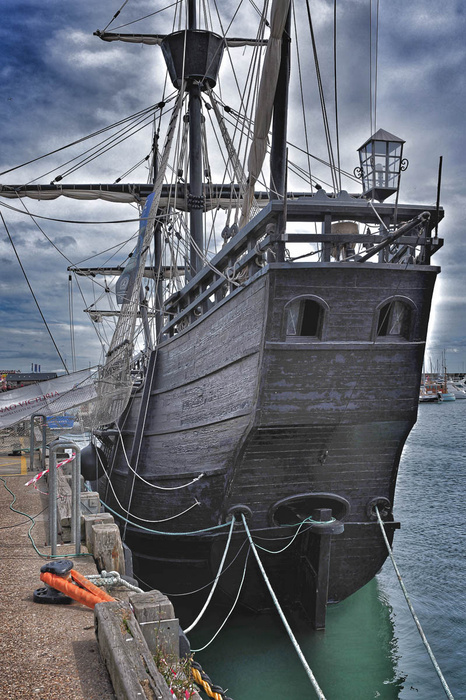
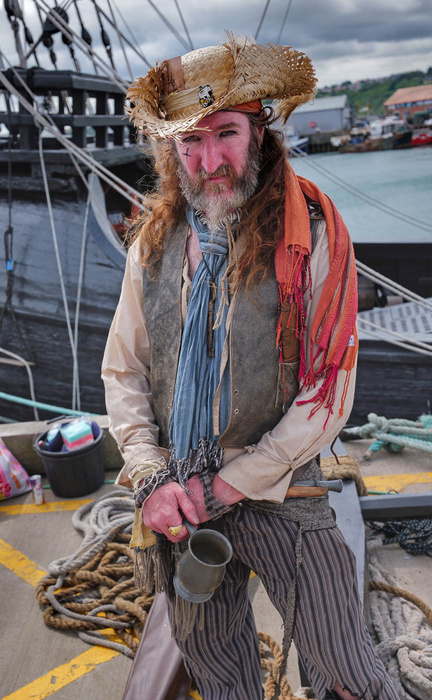
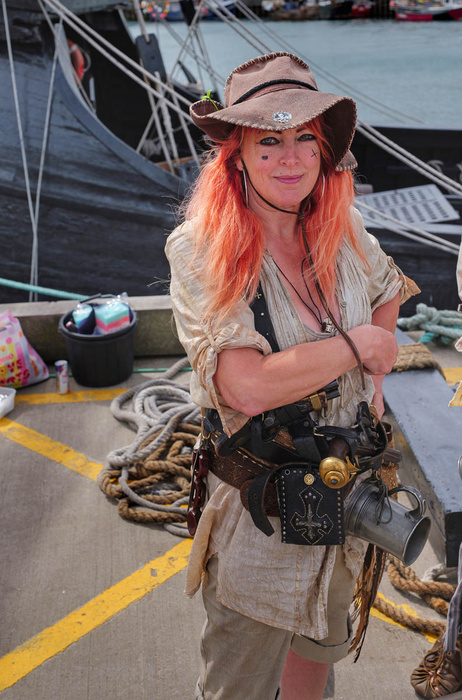
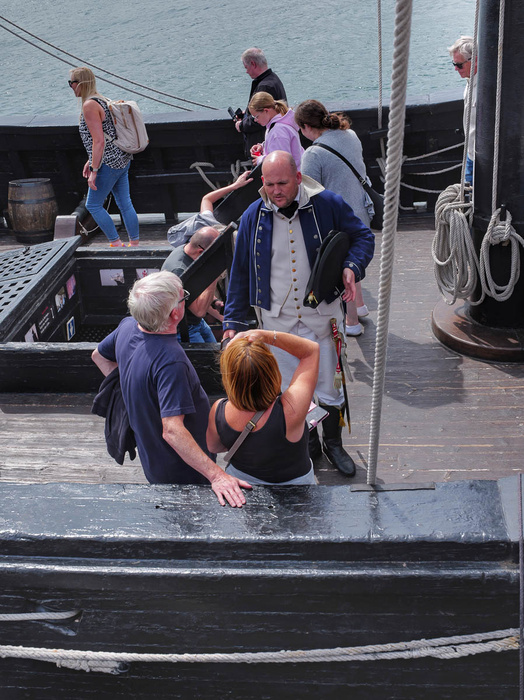

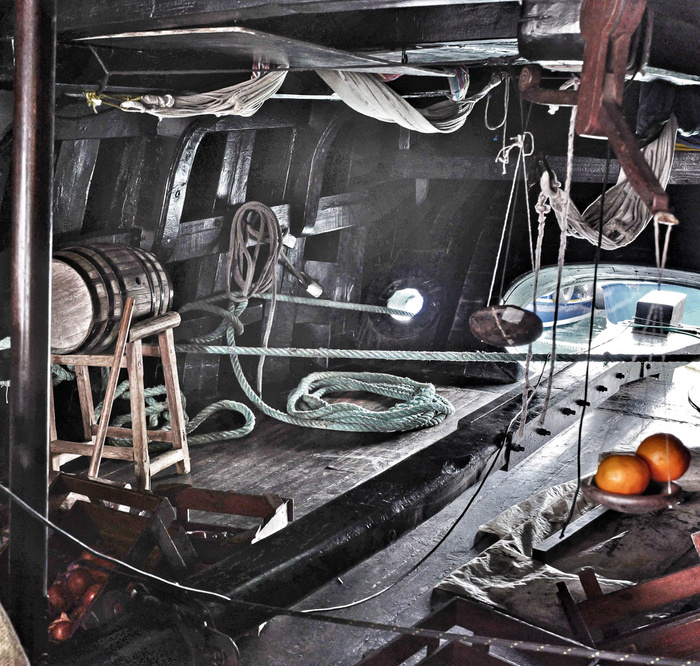


We saw on our local TV news that a Spanish galleon named Nao Victoria was visiting Scarborough for a few days and would be moored at the fisherman’s wharf on the quay, close to the main harbour road.
This was another chance to do some black and white photography and enjoy more of Scarborough’s food delights.
I quickly decided which camera and lenses to take: the M11 Mono with two lenses — a 35mm f/2 and a 21mm f/3.5 — both fitted with yellow filters, and the SL3 with a 35mm f/2 lens.
We pre-booked the ship’s boarding tickets and time the day before, so we didn’t have to queue. Tickets for adults were £8.
I always find the lighting conditions at the Scarborough seafront challenging. The strong light seems to come directly from overhead, casting shadows on people’s faces — a problem I don’t have at Whitby.
________________________________________
Nao Victoria History
The Nao Victoria was a Spanish galleon famous for being the first ship to successfully circumnavigate the globe. It was one of five ships in the fleet that set sail under Ferdinand Magellan in 1519, aiming to find a westward route to the Spice Islands (now the Moluccas in Indonesia).
The fleet included:
• Trinidad (flagship)
• San Antonio
• Concepción
• Santiago
• Victoria
Specifications:
• Type: Carrack (or nao, an early type of European sailing ship)
• Tonnage: Around 85 tons
• Length: Approx. 25 meters (82 feet)
• Crew Capacity: ~45 men
• Armament: Small cannons; lightly armed
The fleet began with five ships and around 265 crew members. After Magellan’s death in the Philippines, Juan Sebastián Elcano took command of the Victoria.
On September 6, 1522, Victoria returned to Spain — the only ship to complete the journey — with just 18 crew survivors. The voyage proved that the Earth could be circumnavigated by sea, revolutionizing global navigation.
Victoria returned with a cargo of spices so valuable that it covered the cost of the entire expedition.
________________________________________
Modern Replica
A full-scale replica was built in 1992 for the Universal Exposition in Seville.
This replica repeated the original voyage between 2004–2006 and now tours ports around the world.
________________________________________
The Photographs
As we approached the ship I could see it was sitting high on wharfs quay due to high tide which was brilliant for photographing the ship.
Choosing the photographs for this article was quite a challenge due to the bright overhead light — and, when on board the vessel, the complete absence of light in the captain’s cabin.
When I entered the captain’s cabin, it was in complete darkness. I let my eyes adjust, but it remained very difficult to see the far side. The cabin had no lights, and every surface was painted black.
First, I raised the M11 with the 21mm lens to my eye but couldn’t find anything to focus on. So, I turned to the SL3 with the 35mm lens. Still, I couldn't see a clear focus point, so I simply fired away and let the camera do its best.
When I reviewed the pictures at home, I found the SL3 with the 35mm f/2 lens had managed to capture the shot — although the far side of the cabin was still quite dark. I imported the photo into the Snapseed app, and some basic adjustments helped bring out the hidden detail. Please judge for yourself. (Photo # Captain’s Cabin)
The other photos received similar treatment in Snapseed. While I normally use Lightroom to make adjustments, I’ve found that Snapseed offers more precise control and better overall image appearance.
For those not familiar with Snapseed, it’s a free photo editing app by Google, available for iPhone and iPad.








Comments
 By David Askham: Very informative and interesting, Dennis. Thank you for sharing your experience with us. The lack of comfort is evident. You did very well to reveal such detail in a dark place. It just shows how good modern sensors are if you capture in Raw format.
By David Askham: Very informative and interesting, Dennis. Thank you for sharing your experience with us. The lack of comfort is evident. You did very well to reveal such detail in a dark place. It just shows how good modern sensors are if you capture in Raw format.